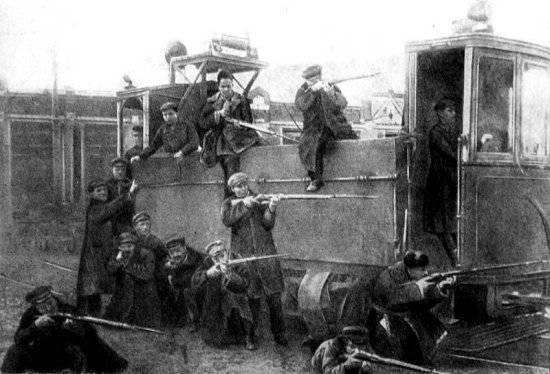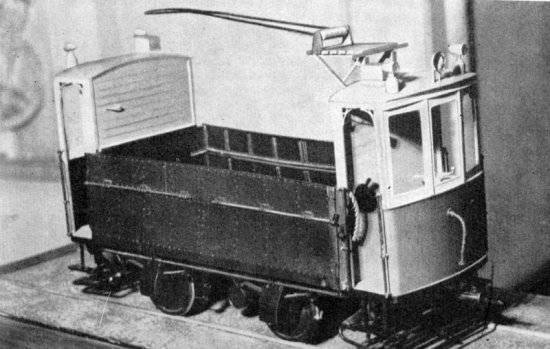Moscow trams in the battles for Soviet power
Why do I think this is not the first option? Because in the course of research on the subject I came across a rather detailed description of the really first combat tram that entered the battle, literally in the first hours of the October Uprising. As it is described in the book "The Guard of October: Moscow" (M., 1967), in part regarding:
The idea to equip the tram, protected from bullets, dawned on Mikhail Vinogradov before the uprising. He brought Sternberg to the Dresden Hotel a sheet with simple drawings and a picture of an armored car, on board of which he wrote his favorite line: “I stand up to the truth until last!” Pavel Karlovich smiled, recalling the words of the distant merchant Kalashnikov, hid the drawings in his pocket with a vague hope - maybe will come in handy. Apakov, to whom Sternberg showed a sheet with Vinogradov’s calculations, became interested in: - Let’s estimate.
The armor plates in the Zamoskvoretsky tram park turned out to be small, barely enough for the driver's cab. They thought and guessed and replaced the armor with wooden frames, covered the walls with sand, tried: the bullet does not take! At the suggestion of Sternberg, they installed a rotating wheel inside, fixed a machine gun on it. This is how the “armored tram” was born, as the creators dubbed it, not really embarrassed by the fact that the role of armor had to be reassigned to 50-mm boards.
modelka zamoskvoretskoy bronedreziny
Near the Crimean bridge from the attic of the dormer window someone gave light signals. The red light blinked nervously. He blinked more often, sometimes less often, and then died away, so that after a minute he would send restless signals into the darkness of the night again.
- Let's hit? - Apakov asked.
- Hit! - agreed Sternberg.
It was audible how, with a creak, the wheel turned, and at once the carriage was filled with a steel shiver; the echoing echo of the machine-gun burst flashed through the air and broke off. The dormer in the attic was hopelessly blind. The red pupil of the lantern obviously died out forever ...
On Smolensk Square armored stopped. In the big house from the side of the Arbat there were bright lights. Enemy observers announced the area with sharp, shrill whistles. Shots rang out of the basements, from the attic of the building that dominates the crossroads, the Maxim fire cut the air. Night rest, blown up, awakened by indiscriminate firing, as if it did not exist. Crazy bullets clattered on the armor cap, drummed on the wooden covering of the tram.
So the armored tram was built at least two - a wooden one with a Maxim machine gun, and this one in the photo, with metal armor, but without its own weaponry. Behind the levers of the first sample stood Peter Lukich Apakov, in whose honor the Zamoskvoretsky tram park was later named, about the commander of the second option, alas, there is no information, however, maybe he also taxied. The armored trailers did not play any key role in the battles, but served as a link uniting the scattered Red Guard units into a centrally controlled and unified force, breaking through areas controlled by the enemy with cargo. weapons, ammunition, and with the landing too.


Information